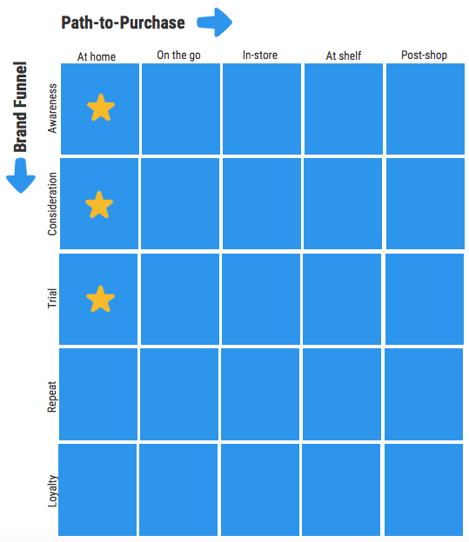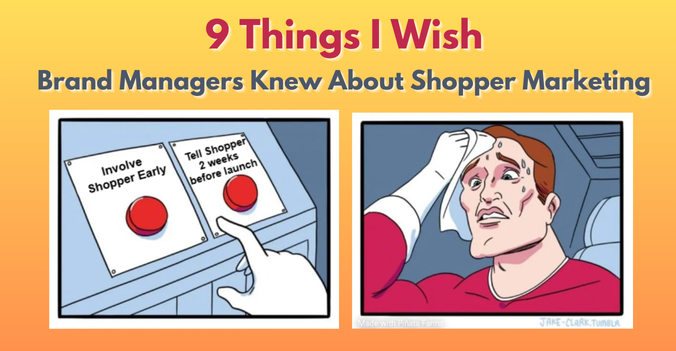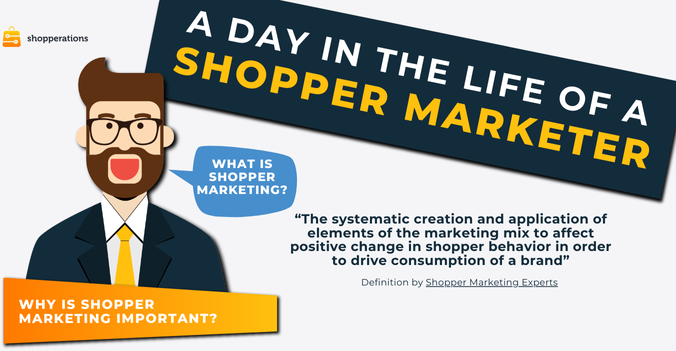 Is your desk buried in vendors' capabilities presentations? Did you stop picking up your phone because vendors inundate you with requests to meet and try their new marketing vehicles? Do you seek clarity on what tactics actually work for your brands in the context of your retail partner environment? How do you stay productive and focused yet find energy and time to experiment with new shopper marketing capabilities?
Is your desk buried in vendors' capabilities presentations? Did you stop picking up your phone because vendors inundate you with requests to meet and try their new marketing vehicles? Do you seek clarity on what tactics actually work for your brands in the context of your retail partner environment? How do you stay productive and focused yet find energy and time to experiment with new shopper marketing capabilities?
Welcome to today's crazy world of shopper marketing! The number of new vendors that popped up on our horizon increased dramatically, mostly due to new digital technologies that are drastically re-shaping the marketing and retail industries. To make sense of it all, you will need five things:
1. "Speed Dating" Screener
When anyone on your team comes across a curious new marketing capability, ask them to take the new vendor through a semi-formal screening process. Think of it as "speed dating" of sorts. This simple step will help ensure that no one's time is wasted and relevant opportunities gain due traction within your team. Come up with a short list of questions to quickly qualify or disqualify each opportunity. For example, you can ask all new vendors the following five questions (and see what their responses can reveal):
- Who is your ideal target client? What sort of companies use your services and why? (See if they describe someone like you)
- What is your geographic coverage? (Do they play in your retail partners' RMAs?)
- Can you target shoppers who shop at specific retail chains? (Do they even understand what shopper marketers do?)
- Do you partner with any of my retail clients? Are you on their preferred vendors list? (Do they understand how important retailer buy-in is for shopper marketers?)
- How are you different from another company we are already using for [...] ? -- insert the type of capability (Do they have a strong point of difference?)
This list is by no means exhaustive, but it's important to keep it short and not get bogged down by too many details.
2. Mini-RFI Template
If a vendor passes the initial screening test and looks like a good fit, a natural next step may be to schedule a capabilities presentation. To help the vendor prepare for that meeting and make the most of your time, ask them to fill out a mini-RFI template (RFI stands for Request for Information). Even if you end up skipping the meeting, the mini-RFI will help you gather essential data for future consideration. In the template, focus on the executional details, for example:
3. Evaluation Framework
Once you screen vendors and gather more details about their capabilities via a mini-RFI template, it is time to take a step back and think how this new capability fits into the bigger picture. There are many ways to organize complex information into a useful framework, the one we find most appropriate is P2P x Brand Funnel Matrix, because it combines brand and retail marketing thinking.
In this framework, the path-to-purchase steps, from pre- to post-shop, are laid out across the top of the matrix, while brand funnel metrics, from awareness to loyalty, are listed along the side. Each tactic can be placed into one or multiple cells to illustrate what brand objectives it drives best and where its most appropriate use is.
Some of the tactics will appear on the matrix more than once because they are versatile enough to be used in various situations or drive multiple objectives. Others will be firmly rooted in one particular cell. This sort of thinking can be used ad-hoc, as new capabilities emerge, or on an on-going basis, for large scale shopper marketing promotions, to help organize your plans and streamline shopper communications.
The P2P x Brand Funnel Matrix can be used as a foundational training for new team members. In fact, it is a good idea to assign a junior team member to be in charge of this process, as it helps them get very good exposure to the breadth and depth of information all at the same time.
4. Data Management System
Frameworks can help you categorize and simplify complex information for easier understanding, but they will fall short when you need to step up your game and apply analytical methods to optimize your vendor and tactic investments. To deepen your understanding of your relationship with existing vendors, to monitor success of emerging capabilities, to benchmark tactical results and to continuously improve through iteration, it is essential to track all your team's activities down to a tactic level and link activities to specific vendors. This may seem like a huge undertaking if your team still plans and tracks their activities in Excel. However, this information is likely already collected by individual team members in the trackers they built for themselves. Consider investing into modern marketing planning technology, not only to manage vendors, but simplify and streamline your overall marketing operations and let the information flow freely between team members.
5. Engaged And Curious Agency Partner
Lastly, it's worth noting, that an engaged and curious agency partner will be an important ally in your pursuit to gather, evaluate, sort and test new marketing capabilities. Give your agency a central role in building up your vendor and tactic library and supporting your analytical capabilities. Strong agency support in this journey will not only relieve some of the burden for your team, but also engage both sides in higher-level discussions, offer opportunities for joint exploration and co-creation, ultimately strengthening and ensuring the success of your relationship.










